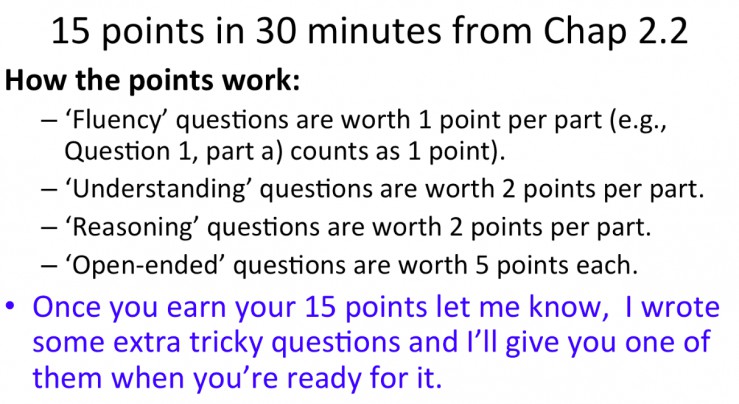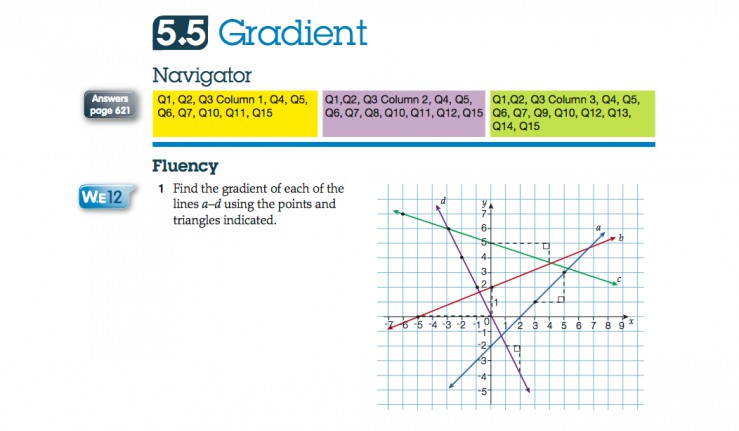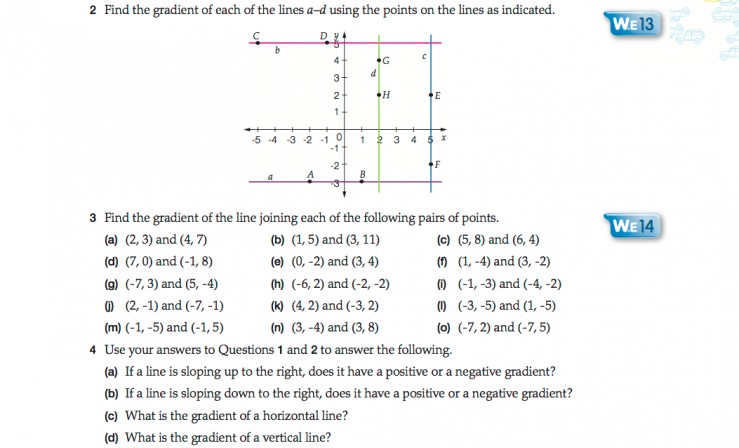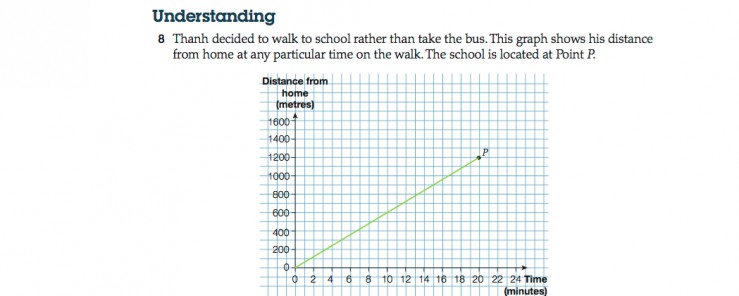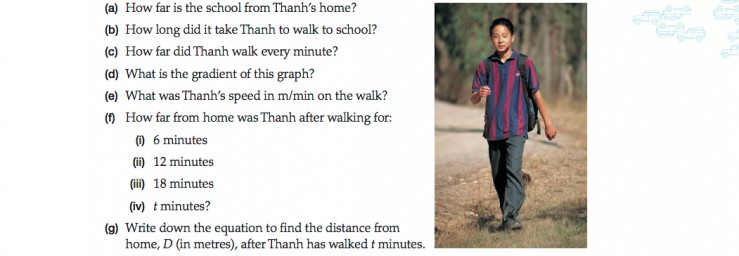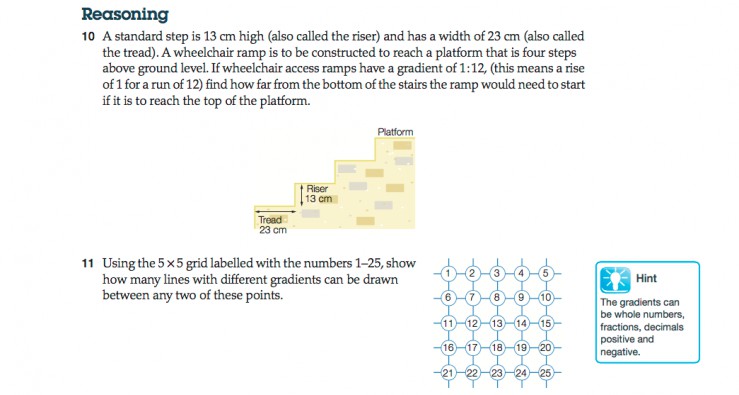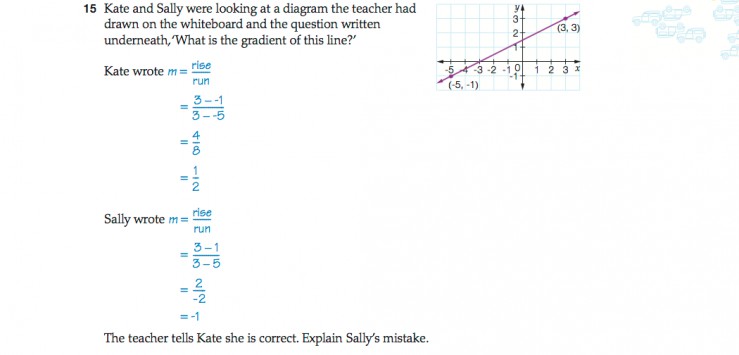When I was in school I remember that I found nothing more boring than the instruction to ‘do questions number 1 to 5, parts a) to h)’. I would get my head around the concept by question b or c of each section, then have to spend what seemed like an eternity working through a whole bunch of exactly the same question with different numbers. With this knowledge of my own experience in mind, I’ve always known that I wanted to try to avoid this same boredom for my own students.
This approach to differentiation and boring repetition reduction was brought to my attention by one of my Masters of Teaching lecturers Nicky Dulfer, who said that one of her friends had implemented an ‘earn points’ system in their own mathematics class. I thought it sounded like a nice idea. Here’s how I approached it…
The slide I showed to students:
For those unfamiliar with the proficiency strands of fluency, understanding, reasoning and problem solving (‘open-ended’ in this case), here’s an example of a few example Q’s for context (from the Pearson Mathematics 9 Textbook).
Did students like it?
This was implemented with a year 9 mathematics class.
Mid placement feedback: In response to the question ‘What should Ollie keep on doing?’ five students nominated the points system. In response to the question ‘What should Ollie stop doing or modify?’ no students nominated the point system. (Highest number of votes for any one category was 8, which was to suggest that I continue making videos of content).
End of placement feedback: In response to the question ‘What did Ollie do that most helped you learn?’, four students nominated the points system. In response to the question ‘What are some things Ollie shouldn’t do in future, or things to modify’, one student said ‘Point system (15 in 30 minutes was too rushed and stressful)’. (Highest number of votes for any one category was 12, which was to suggest that micro-revisions (post on micro-revisions to come…) were what most helped students to learn).
So, on the whole, the points system was well received by students.
Did it help the students to learn?

Unfortunately I didn’t conduct this points system long enough to be able to tell if it increased student learning. But I can say that it appeared to increase engagement, and as ‘a major precursor to learning is engagement’ (Hattie, 2012, Chapter 8, Section 2, para. 1), it’s plausible that it increased learning.
I do however think that it’s fair to say that this task helped the higher achieving students to learn more. After they had gained their 15 points (some of them would finish this in under 10 minutes), students were able to move onto ‘challenge questions’, like the pythagoras challenge questions that I’ve written about previously. The traditional approach for these students was to get them to do a set of questions from each of the proficiency strands (fluency, understanding… etc), which would take up the whole lesson, and was pointless in many cases as these high achieving students could easily complete the task and weren’t being challenged at all.
The idea of students self-differentiating was also intended to help promote metacognition. Fostering metacognition is a key step to helping students to ‘become their own teachers, which is the core attribute of lifelong learning or self-regulation, and of the love of learning’ (Hattie, 2012, loc 168). But actually scaffolding this metacognition is something that I need to do better in this task and in the classroom more generally. I feel that it’s unreasonable to assume, as I implicitly did, that a year 9 student will be able to select a question at the appropriate level without any help.
Conclusion:
I feel that this task was a step in the right direction and, coupled with the power of spacing repetition of content for students (Carpenter, Cepeda, Rohrer et al., 2012), has great potential to be expanded and improved upon in future. One immediate improvement to make would be to have ‘challenge questions’ (for students who work through the 15 points) of different levels of difficulty, rather than just the one ‘challenge question’ that wasn’t so easily accessible to some students.
Note: Sunshine College has taken a similar approach where students select for themselves a ‘just right’ task and form small groups to solve it. This is an approach that I’ll be exploring more in the near future. You can read a brief paper about it here.
References:
Hattie, J. (2012). Visible learning for teachers. [Kindle version]. Retrieved from Amazon.com.au
Carpenter, S. K., Cepeda , N. J., Rohrer, D., Kang, S. H., & Pashler, H. (2012). Using Spacing to Enhance Diverse Forms of Learning: Review of Recent Research and Implications for Instruction. Education Psychology Review , (24), 369-378.
